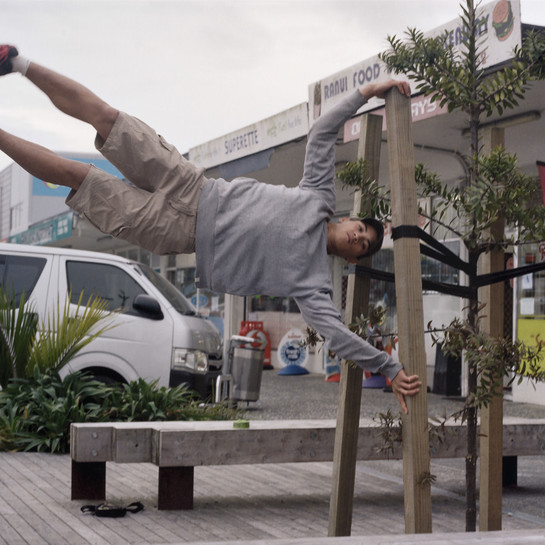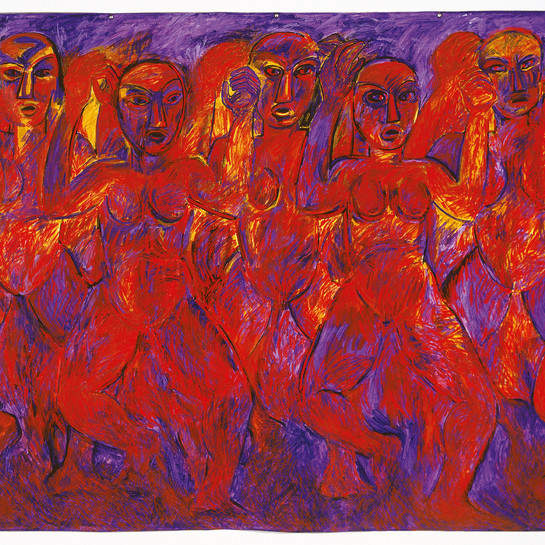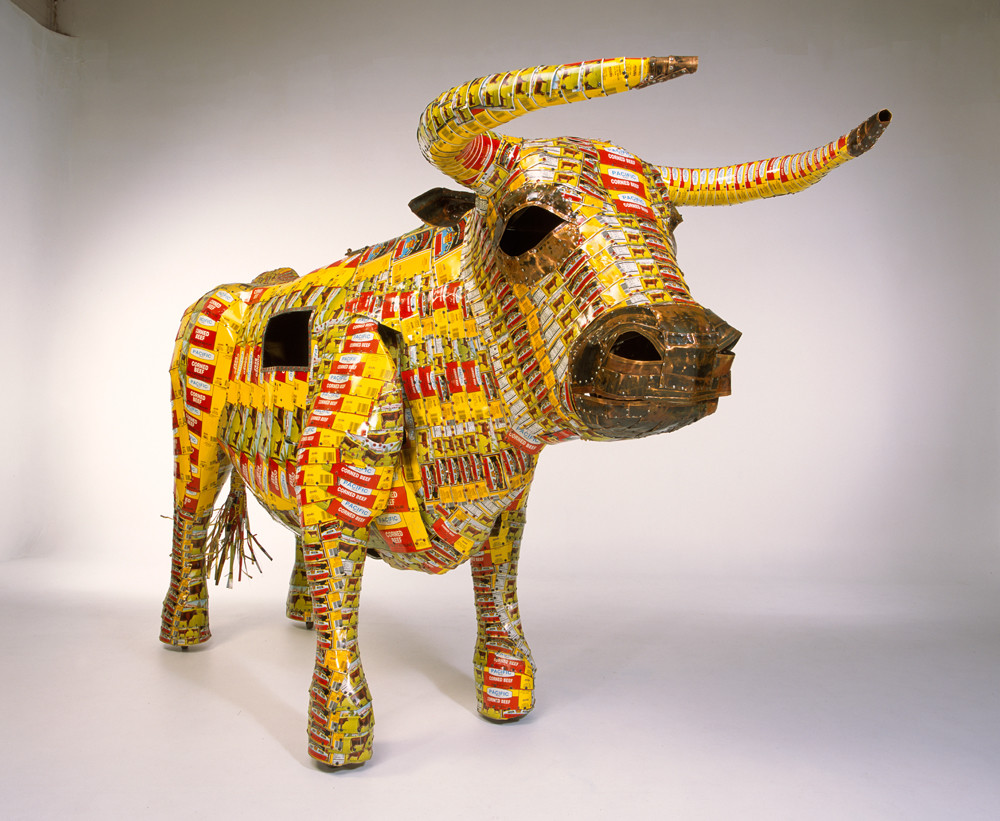Jacqueline Fraser
The benediction of Goat Island our Saviour: A long view of our very blessed saviour from a distance (with goats rampant)
- 1998
- Chiffon, electric cables, wire, pearl-headed pins
- Purchased 1999
- 1800 x 3180mm
- 99/62.1-9
Tags: animals, crowns (headdresses), curtains (window hangings), goats, people (agents), veils (headcloths), windows, women (female humans)
Mapoutahi – the bush-covered Goat Island in Pūrākaunui Bay, north of Ōtepoti Dunedin – was the site of an important Ngāi Tahu pā in the eighteenth century. It was returned by the government to the iwi as a cultural resource in 1997.
Jacqueline Fraser’s installation suggests a scene of ceremonial devotion to the island. Its starting point, like many of her works from the 1990s, is the history of her family marae and her ancestral heritage. She combines inexpensive everyday materials like wire and electric cable with luxurious chiffon silks and ribbons: “Gorgeous is an interest of mine”, she has stated of her work. The binding and tying recalls both customary Māori weaving practices and aspects of Jacqueline’s Scottish heritage.
(Perilous: Unheard Stories from the Collection, 6 August 2022- )
Exhibition History
We do this, 12 May 2018 - 26 May 2019
Rakiriri – the bush-covered Goat Island in Purakaunui Bay, north of Dunedin/Ōtepoti – was the site of an important Kāi Tahu pā (fortified village) in the eighteenth century. It was returned by the government to the iwi (tribe) as a cultural resource in 1997.
Jacqueline Fraser’s installation suggests a scene of ceremonial devotion to the island; its starting point, like many of her works from the 1990s, is the history of her family marae and her ancestral heritage. She combines inexpensive everyday materials like wire and electric cable with luxurious chiffon silks and ribbons: “Gorgeous is an interest of mine”, she has stated of her work. The binding and tying recalls both customary Māori weaving practices and aspects of Fraser’s Scottish cultural heritage.


